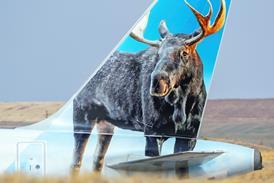Athens operator wants to repeat Greek islands success with flights from London
Greece's AirSea Lines is planning to introduce seaplane services to the UK and is holding talks with local stakeholders and businesses with a view to operating between London and Wales, and Cumbria in the north of England. Further expansion is also planned on the European mainland, it says.
The Athens-based company, which runs a burgeoning seaplane operation throughout the Greek islands, plans to operate up to 10 de Havilland DHC-6 Twin Otters in the UK. It will offer flights to relatively inaccessible regions, landing the aircraft on lakes, estuaries and in bays "where little infrastructure is required and where there will be minimal impact on the local surroundings", it says.
AirSea Lines vice-president Walter Stark says: "We have satisfied all stringent environmental criteria in Greece with regards to landing on lakes and bays, therefore we can't foresee any problems doing the same in the UK."
Meanwhile, reports that New York City mayor Michael Bloomberg wants to offload the slot-limited LaGuardia airport by opening the city's waterways to seaplane shuttle flights may be premature. Bloomberg first discussed the potential benefits of having seaplanes serving the city a year ago, but John Gallagher, a spokesman for New York City hall, told Flight International there has only been one "preliminary" meeting on the topic since then. Questions about the types of aircraft that could use such a facility have not yet been addressed, he says. "It's something that needs much more study and consideration."
Saxon Rudduck, managing director of Tigerfish Aviation, an Australian company researching methods to convert high-wing turboprop aircraft into efficient seaplanes, confirms he has had talks with economic development officials in New York, as reported by local media. Rudduck says the company's patented design, in which floats are deployed for landing and retracted in cruise flights, can cut drag by nearly 20% over standard floatplane designs, allowing for the economical seaplane conversions for aircraft the size of the Bombardier Dash 8.
The company does not have a prototype, but has tested its retractable float design on a 1/6-scale radio-controlled Cessna Caravan. Rudduck says the next step will be aerodynamic and hydrodynamic analyses to refine the design in advance of a prototype.
|
|---|
Up to 10 de Havilland DHC-6 Twin Otters could operate from London to relatively inaccessible UK regions |
Source: Flight International
























